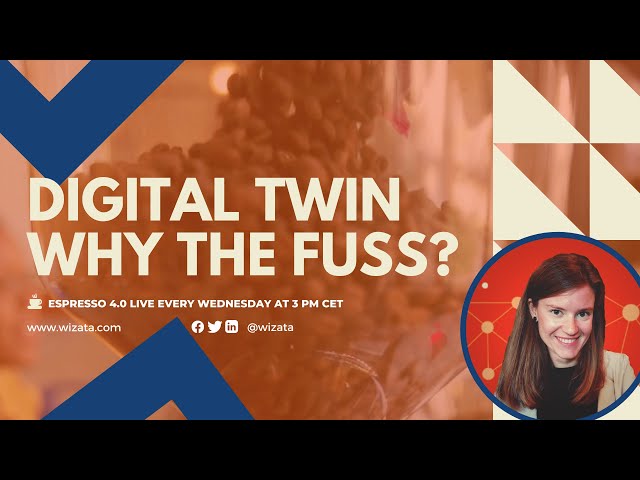![]() Espresso 4.0 by
Espresso 4.0 by
Wizata
Digital twin, what's all fuss about, and what are the main contributions of the digital twin, the benefits? Right now, it's clear that the digital twin falls into that category of digitalization and innovation that can help industry, specifically in our case, the manufacturing sector, develop faster and more efficiently. There are several reasons why this is the case.
Benefits of Digital Twin
First, you can centralize your data through the digital twin. We're talking about the data from the process itself but also about other data sources, such as quality inspection and maintenance logs, which can be centralized into the digital twin.
There is also a transformation between a digital twin that is only visual or static into one that is more dynamic, with which the engineers can interact. Also, one of the benefits of having a digital twin is that you can give context and meaning to the data you visualize. Seeing a value and seeing data is different than seeing the same value in a context.
The digital twin gives you the capabilities and the possibility to understand the process and what that data means in the full picture. Also, as we mentioned, there is the ability to interact with the digital twin.
This interaction is usually done by the simulation engine, which allows you to transform those steps you would do on the line directly. This usually means you would have to stop the line and lose some of the output while performing these changes.
Some other capabilities include alarms for predictive maintenance, for example, or notifications for general recommendations and optimal performance setting of the line. The digital twin is transitioning from something purely visual, where you see your data and your process, into something you can interact with.
In other words, we try to encapsulate what is normally done by the wisdom of engineers or operators that are in the process already for 10 or 15 years.
Risks and Pitfalls
Let's look at the other side of the coin. What could be some of the pitfalls and risks of adopting the digital twin?
As in all projects, not only ones related to digital innovation, there are some risks. One of them is not having a clear output of your project. So make sure when you start something, you have a clear objective. You could start with a limited objective, with a limited target, something you can measure, especially in terms of ROI.
We know the ultimate goal is to generate money. So we need to have a project, an objective that can be measurable. We have a metric. The last thing we want to say is that we've done the project and have a clear output.
It also involves all the stakeholders and the taxes that need to be involved. The human factor is also very important, especially when there must be a shift in the culture. And digitalization is mainly about that. It's about technology, but it's also about people. So make sure you have all your actors, IT, business, and management, and make them understand the value behind the project.
And, of course, you need to select the technology that fits your ultimate goal, your strategy, something that you start with, a simple layer, and then you can add up to. For example, you start with the digital twin, but then you have a technology that allows you to integrate AI or something more advanced.
Best Ways to Implement Digital Twin
SME comes to you, and they want to develop a digital twin. What would be your suggestions on the steps they need to take to get there?
First, I would tell them to select equipment or a small part of the line that can be problematic. For example, a blast furnace or something way smaller like a compressor, while selecting something replicable. Once you have a model, strategy, or approach for the specific asset, you can easily replicate it in another plant or within the same plant.
For example, there could be a lot of compressors within one plant, or bearings, motors, all these things that are a limited scope will allow you to start familiarizing with the technology. Start small, always having in mind the long-term strategy that you want to achieve.
The learning tool can differ for companies based on their digital maturity, so no one model fits all. You need to start with the right project with a measurable outcome.




